14.07.2023
Building blocks of Mars life? Perseverance rover digs up diverse set of organic molecules on the Red Planet
But organics can be produced by geological processes as well as biological ones.

NASA’s Perseverance rover works at a rocky outcrop called Skinner Ridge in Mars’ Jezero Crater. (Image credit: NASA/JPL-Caltech/ASU/MSSS)
NASA's Perseverance rover has found a diverse menagerie of organic molecules in a Martian crater, a new study reports.
Organic compounds are molecules composed of carbon, and often include other elements such as hydrogen, oxygen, nitrogen, phosphorus and sulfur. Previously, scientists had detected several types of organic molecules of Martian origin — in meteorites blasted off Mars by cosmic impacts that landed on Earth, and in Gale Crater on the Red Planet, which NASA's Curiosity rover has been exploring since 2012.
"They are an exciting clue for astrobiologists, since they are often thought of as building blocks of life," study lead author Sunanda Sharma, a planetary scientist at the California Institute of Technology in Pasadena, told Space.com.
However, "importantly, they can be created by processes not related to life," Sharma emphasized. As such, investigating what organic molecules exist on the Red Planet and how they were created is key to understanding what may or may not be linked to life on Mars.
"As planetary scientists and astrobiologists, we are very careful with laying out claims — claiming that life is the source of organics or possible biosignatures is a last-resort hypothesis, meaning we would need to rule out any non-biological source of origin," Sharma said.
In the new study, Sharma and her colleagues analyzed data from Perseverance. In February 2021, the rover landed within Jezero Crater, the site of an ancient lake basin that prior work suggested displayed high potential for past habitability. The crater floor also possesses clays and other minerals that may preserve organic materials.
Specifically, the scientists examined data from the Scanning Habitable Environments with Raman and Luminescence for Organics and Chemicals (SHERLOC) instrument onboard Perseverance. SHERLOC is the first tool on Mars capable of conducting fine-scale mapping and analysis of organic molecules.
The researchers focused on SHERLOC data from Máaz and Séítah, two rock formations on the Jezero Crater floor. When ultraviolet light from SHERLOC illuminates organic compounds, they can glow much like material beneath a blacklight. The fingerprint of wavelengths in the glow from a molecule can help identify it.
Sharma and her colleagues found signs of organic molecules in all 10 targets that Perseverance drilled into at Máaz and Séítah, covering a span of time from at least about 2.3 billion to 2.6 billion years ago. These "point to the possibility that building blocks of life could have been present for a long time on the surface of Mars, in more than one place," Sharma said.
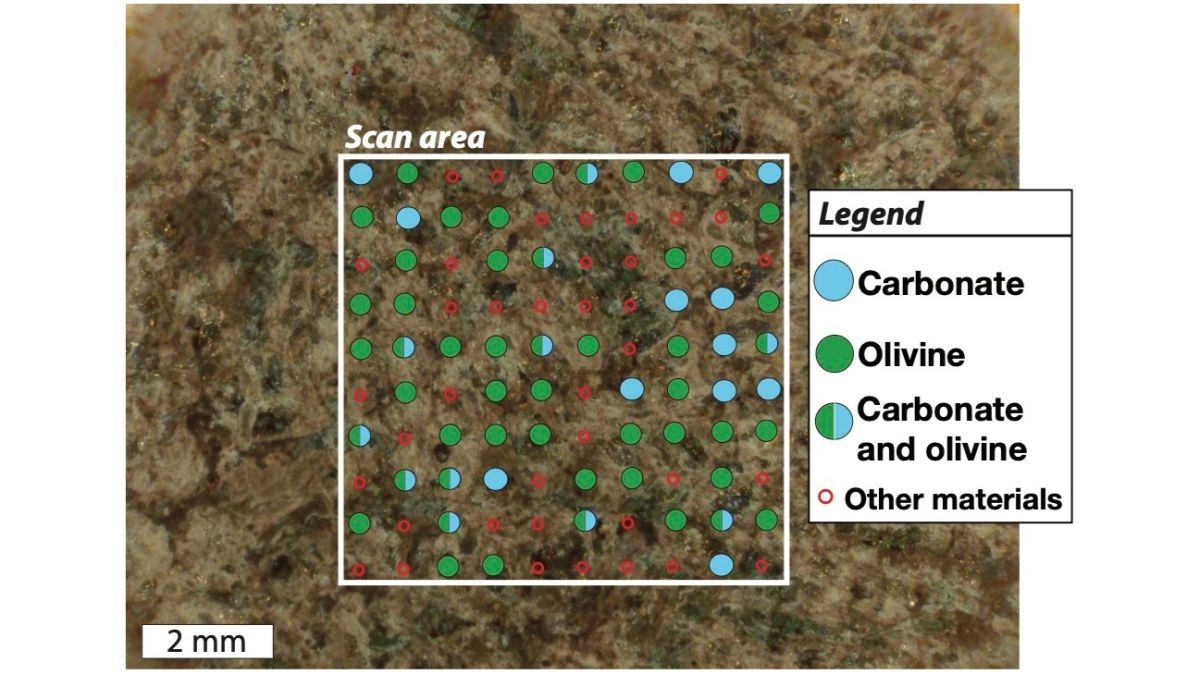
This annotated image shows a rock target called "Garde," as analyzed by the Mars rover Perseverance's SHERLOC instrument. This data was taken on Sept. 18, 2021, the 207th Martian day, or sol, of the mission. (Image credit: NASA/JPL-Caltech/MSSS/LANL/PhotonSys)
The scientists discovered evidence of many different classes of organic molecules. These occurred in a variety of patterns in space within Máaz and Séítah, suggesting they might have originated from a number of different minerals and mechanisms of formation. These organic compounds mostly appeared connected to minerals linked to water.
"Seeing that the possible organic signals differ in terms of type, number of detections and distribution between the two units of the crater floor was surprising and exciting," Sharma said. "That opens the possibility of different formation, preservation or transportation mechanisms across the crater and, more broadly, the surface of Mars."
The scientists could not identify specific organic molecules. "To confirm the presence of organics and their specific types, we would need the samples to be returned to Earth," Sharma said. "That's our goal."
The scientists detailed their findings online today (July 12) in the journal Nature.
Quelle: SC
----
Update: 22.07.2023
.
NASA’s Perseverance Rover Sees Mars in a New Light

NASA’s Perseverance Mars rover uses SHERLOC – one of several instruments on the end of its robotic arm – to study rocks in an area nicknamed “Skinner Ridge.”
Credit: NASA/JPL-Caltech/ASU/MSSS
A cutting-edge instrument called SHERLOC, which hunts for molecules potentially related to ancient life, played a key role in a recent study.
In its first 400 days on Mars, NASA’s Perseverance rover may have found a diverse collection of organics – carbon-based molecules considered the building blocks of life – thanks to SHERLOC, an innovative instrument on the rover’s robotic arm. Scientists with the mission, which is searching for evidence that the planet supported microbial life billions of years ago, aren’t sure whether biological or geological sources formed the molecules, but they’re intrigued.
Short for Scanning Habitable Environments with Raman & Luminescence for Organics & Chemicals, SHERLOC helps scientists decide whether a sample is worth collecting. This makes the instrument essential to the Mars Sample Return campaign. The Perseverance rover is the first step of the campaign, a joint effort by NASA and ESA (European Space Agency) that seeks to bring scientifically selected samples back from Mars to be studied on Earth with lab equipment far more complex than could be sent to the Red Planet. The samples would need to be brought back to confirm the presence of organics.
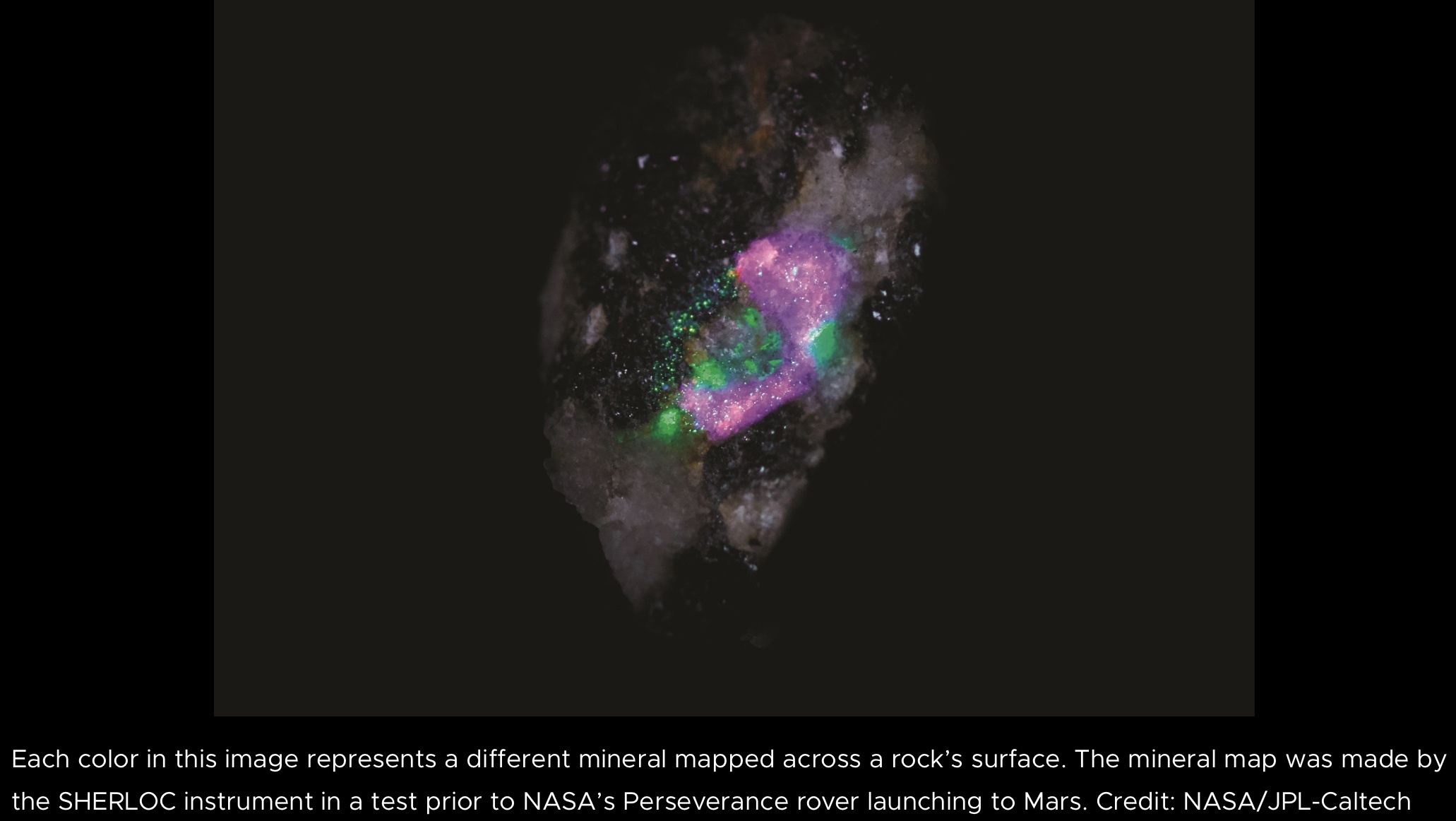
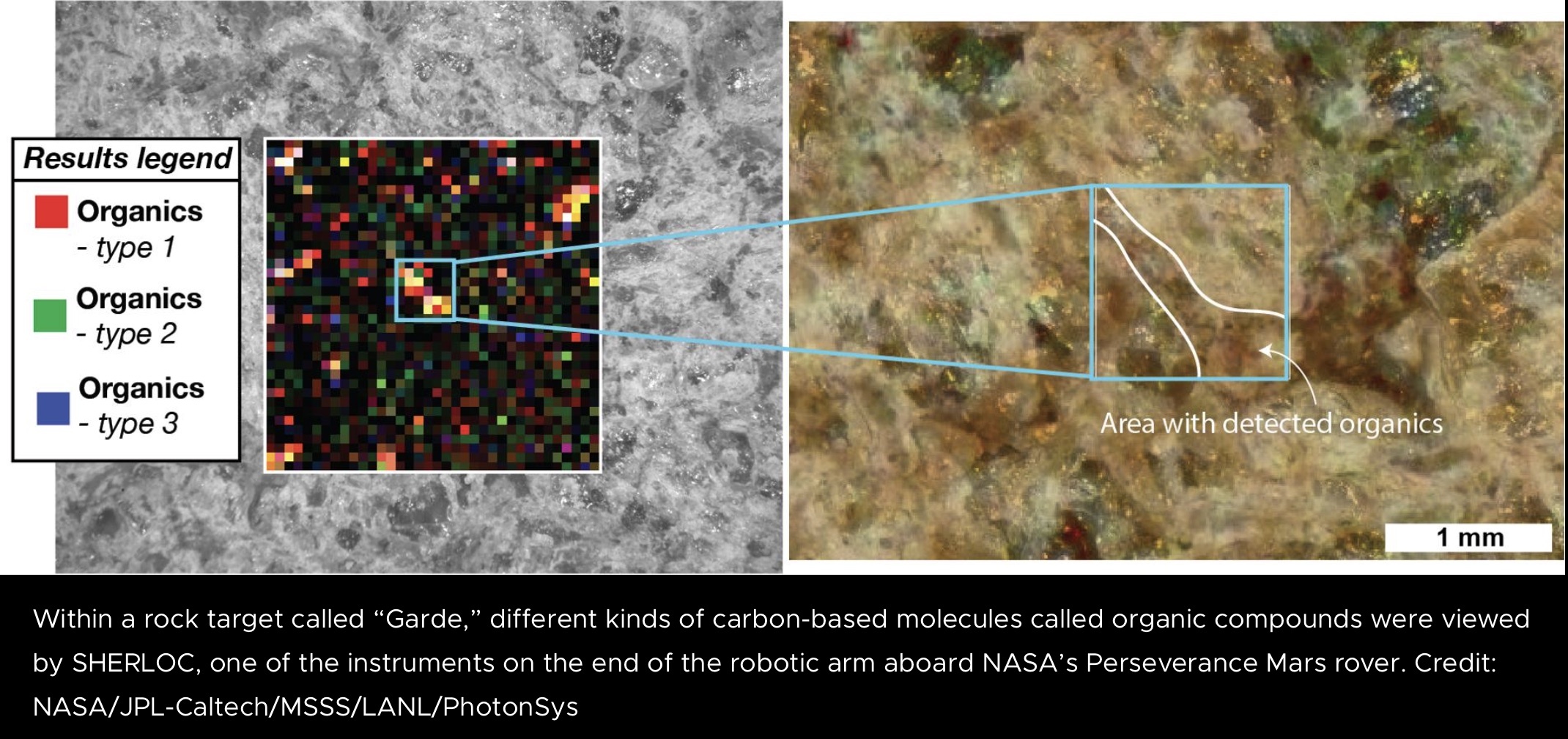
SHERLOC’s capabilities center on a technique that looks at the chemical makeup of rocks by analyzing how they scatter light. The instrument directs an ultraviolet laser at its target. How that light is absorbed and then emitted – a phenomenon called the Raman effect – provides a distinctive spectral “fingerprint” of different molecules. This enables scientists to classify organics and minerals present in a rock and understand the environment in which the rock formed. Salty water, for example, can result in the formation of different minerals than fresh water.

This close-up view of the SHERLOC instrument located at the end of the robotic arm on NASA’s Perseverance rover was captured prior to the rover’s launch to Mars.
After SHERLOC captures a rock’s textures with its WATSON (Wide Angle Topographic Sensor for Operations and eNgineering) camera, it adds data to those images to create spatial maps of chemicals on the rock’s surface. The results, detailed in a recent paper in Nature, have been as promising as the instrument’s science team had hoped.
“These detections are an exciting example of what SHERLOC can find, and they’re helping us understand how to look for the best samples,” said lead author Sunanda Sharma of NASA’s Jet Propulsion Laboratory in Southern California. JPL built SHERLOC along with the Perseverance rover.
NASA’s Curiosity rover, which landed on Mars in 2012, has confirmed the presence of organic molecules several times in Gale Crater, 2,300 miles (3,700 kilometers) away from Perseverance. Curiosity relies on SAM, or the Sample Analysis on Mars, an instrument in its belly that heats up powderized rock samples and performs a chemical analysis on the resulting vapor.
Because Perseverance’s scientists are looking for rocks that may have preserved signs of ancient microbial life, they want to leave the samples intact for closer study on Earth.
Getting to the Core
The new Nature paper looks at 10 rock targets SHERLOC studied, including one nicknamed “Quartier.”
“We see a set of signals that are consistent with organics in the data from Quartier,” Sharma said. “That grabbed everyone’s attention.”
When data that comes back from SHERLOC and other instruments looks promising, the science team then decides whether to use the rover’s drill to core a rock sample that’s about the size of a piece of classroom chalk. After analyzing Quartier, they took rock-core samples “Robine” and “Malay” from the same rock – two of the 20 core samples collected so far (learn more with the sample dashboard).
Picking out a good target to collect a sample from isn’t as simple as looking for the most organic molecules. Ultimately, Perseverance’s scientists want to collect a set of samples that’s representative of all the different areas that can be found within Jezero Crater. That breadth will provide context for future scientists studying these samples, who will wonder what changes occurred around any samples that might indicate signs of ancient life.
“The value comes from the sum rather than any individual sample,” Sharma said. “Pointillism is a good analogy for this. We’re eventually going to step back and see the big picture of how this area formed.”
Quelle: NASA
----
Update: 6.08.2023
.
Mars helicopter Ingenuity breaks 3-month flight gap with 53rd Red Planet hop
A 54th flight is in the works.
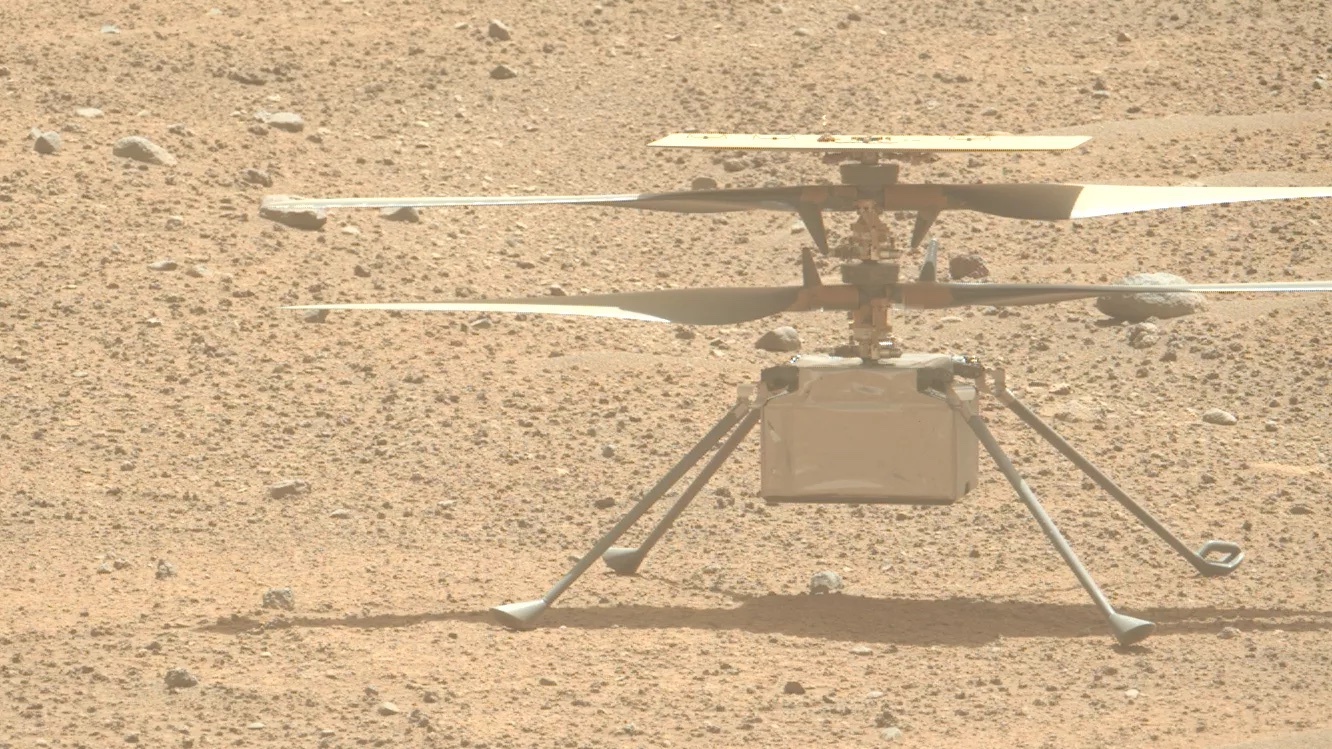
The Ingenuity helicopter imaged on Mars on Aug. 2, 2023. (Image credit: NASA/JPL-Caltech)
Update for 4:45 p.m. ET: NASA's Jet Propulsion Laboratory has now updated Ingenuity's flight log with statistics from the Mars helicopter's 53rd flight. This story has been updated to include those figures.
NASA's Red Planet helicopter took to the skies again after a three-month pause.
The Ingenuity drone flew on July 22 on Mars, achieving Flight 53. According to the the Ingenuity flight log, the helicopter fly horizontally and north across 468 feet (142 meters) of Martian terrain with air time of roughly 75 seconds. Ingenuity soared roughly 16 feet (5 meters) into the air and achieved a top speed of 5.6 mph (2.5 meters per second).
Ingenuity is already gearing up for another flight; NASA's Jet Propulsion Laboratory's Twitter account already says 54 is in the works. "The #MarsHelicopter team is planning a short pop-up flight, with the rotorcraft reaching 16 feet (5 meters) for about 25 seconds," JPL officials wrote of Flight 54on Thursday (Aug. 3).
Anecdotal Twitter reports by keen-eyed Mars watchers, looking at the raw pictures coming in from the Red Planet, suggest the helicopter's 54th flight took place on or before Aug. 2. JPL has not yet released any details of the timing, duration, altitude, distance or speed of the flight on as of mid-morning EDT of Friday (Aug. 4).
The milestone 53rd flight happened roughly three months after the last excursion on April 26 when Ingenuity hopped behind rugged terrain and fell silent. That's because it couldn't reach Perseverance, the massive rover relaying communications to and from Earth, until the two vehicles came within view of each other on June 28.
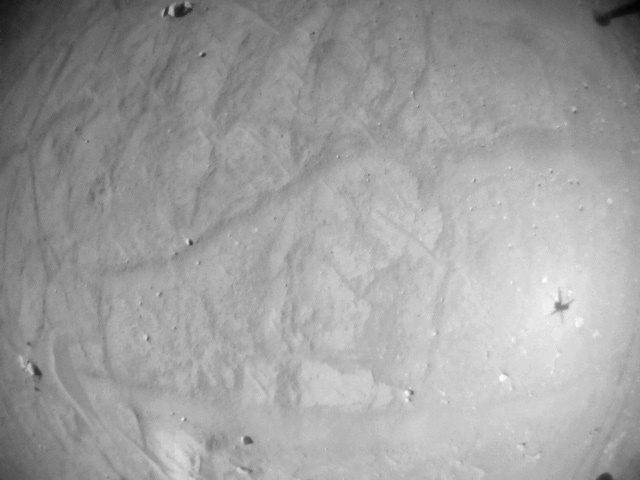
Stills from NASA/JPL's Ingenuity Mars helicopter taken on Aug. 3, 2023. (Image credit: NASA/JPL-Caltech)
Ingenuity has expanded its flight manifest by more than fivefold. Sent to Mars as the first powered, controlled aircraft on another world, the original plan called for only five flights in 2021. The helicopter has persisted with flair through communications shortages, cold weather, dusty conditions and other complications endemic to working on the Red Planet.
The drone's expanded mission now sees Ingenuity act as a scout for its partner Perseverance, which alighted on the surface in February 2021. Perseverance is on a hunt for ancient habitable conditions and is caching samples aside for a planned Mars sample return mission. Lightsaber-shaped samples of Red Planet material may ferry back to Earth in the 2030s, depending on funding and political will.
Quelle: SC
----
Update: 10.08.2023
.
Mars helicopter Ingenuity spies Perseverance rover during 54th Red Planet flight (photo, video)
The sortie occurred on Aug. 3.
NASA's Mars helicopter Ingenuity just snapped a photo of its Red Planet partner.
Ingenuity captured an image of NASA's Perseverance rover on Aug. 3, during the 4-pound (1.8 kilograms) chopper's 54th Mars flight.
Perseverance is nearly out of frame at the top of the photo, which Ingenuity took when it was about 16 feet (5 meters) above the red dirt.
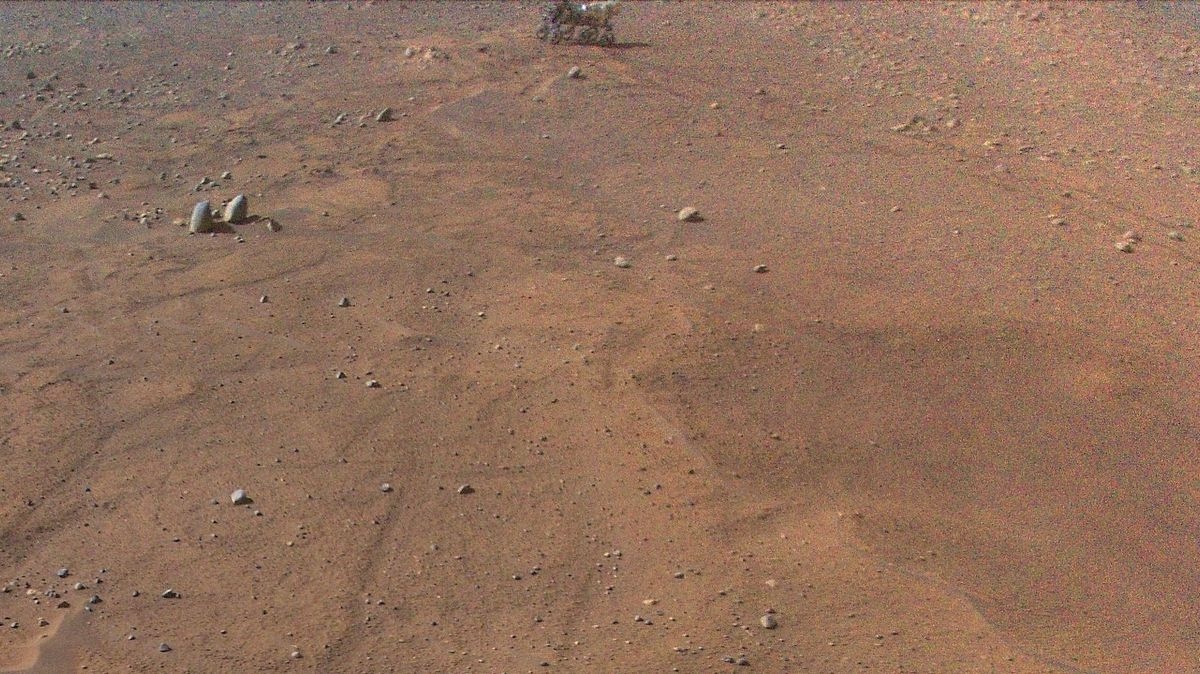
NASA's Ingenuity Mars helicopter snapped this photo of the Perseverance rover during its 54th flight, on Aug. 3, 2023. (Image credit: NASA/JPL-Caltech)
Unlike previous sorties, the Aug. 3 flight wasn't a scouting run to aid Perseverance's science activities. It lasted just 24 seconds, reached a maximum altitude of 16 feet and covered no ground laterally, according to Ingenuity's flight log.
The mission team designed this short and simple hop in an attempt to help understand what happened during Ingenuity's previous flight, which was cut short unexpectedly.
That July 22 sortie was supposed to last 136 seconds and feature several complicated maneuvers. However, Ingenuity stayed aloft for just 74 seconds, touching down after something triggered its "flight-contingency program."
"Since the very first flight, we have included a program called 'LAND_NOW' that was designed to put the helicopter on the surface as soon as possible if any one of a few dozen off-nominal scenarios was encountered," Teddy Tzanetos, Ingenuity team lead emeritus at NASA's Jet Propulsion Laboratory in Southern California, said in a statement.
"During Flight 53, we encountered one of these, and the helicopter worked as planned and executed an immediate landing," Tzanetos added.
Flight 53, by the way, was the first hop for Ingenuity in nearly three months. The little drone was ground bound for so long because rough terrain on the floor of Mars' Jezero Crater blocked its communications with Perseverance. (All commands to, and data relays from, Ingenuity are routed through the rover.)
Tzanetos and his colleagues think they know what triggered LAND_NOW: Imagery from Ingenuity's navigation camera likely got out of sync with its inertial measurement unit, which helps the little chopper determine its position, speed and orientation.
This also happened near the end of Ingenuity's sixth flight, back in May 2021. The mission team soon uploaded a software patch to deal with the issue, but that patch apparently couldn't handle what happened on Flight 53, NASA officials said in the statement.
"While we hoped to never trigger a LAND_NOW, this flight is a valuable case study that will benefit future aircraft operating on other worlds," Tzanetos said. "The team is working to better understand what occurred in Flight 53, and with Flight 54's success, we’re confident that our baby is ready to keep soaring ahead on Mars."
Ingenuity and Perseverance landed together on Jezero's floor in February 2021. The helicopter quickly aced its primary mission, a five-flight technology demonstration. It then moved on to an extended mission, during which it's performing reconnaissance for the Perseverance team.
This isn't the first time that such scouting work has resulted in a photo of Perseverance. For example, the rover made it into frame during Ingenuity's 51st flight, which occurred on April 22.
Quelle: SC
+++
The helicopter on Mars just flew again after surviving an emergency landing
"The helicopter worked as planned and executed an immediate landing."
By the standard of some of its previous flights, the most recent voyage of NASA's intrepid Ingenuity helicopter on Mars was nothing special. Over a period of 24 seconds, the small helicopter rose to an altitude 5 meters above the red planet's dusty surface and then touched back down in the same spot.
During some of its past flights, Ingenuity has flown for nearly three minutes at a time and traversed as far as 700 meters across Martian terrain. In fact, after landing on Mars more than two years ago as part of the Perseverance mission, the helicopter is arguably one of NASA's greatest exploration feats of all time.
Mission success for Ingenuity was completing five relatively short flights. However, since its first test flight in April 2021, the helicopter has exceeded all expectations by flying more than 50 different sorties across Mars and surviving long and dark winters.
Despite its brevity, however, Ingenuity's most recent flight on August 3 was nonetheless an important one for the helicopter. That's because, on its 53rd flight in late July, the helicopter automatically aborted a planned flight of 136 seconds after just 76 seconds and made an emergency landing.
After the flight, the helicopter's operators at NASA's Jet Propulsion Laboratory determined that the premature landing came after images from Ingenuity's navigation camera did not match data from the vehicle's inertial measurement unit. In short, its on-board computer expected to see one thing, and it saw another.
"Since the very first flight, we have included a program called ‘LAND_NOW’ that was designed to put the helicopter on the surface as soon as possible if any one of a few dozen off-nominal scenarios was encountered," Teddy Tzanetos, team lead emeritus for Ingenuity, said. "During Flight 53, we encountered one of these, and the helicopter worked as planned and executed an immediate landing."
The helicopter's flight last Thursday was to gather additional data about the conditions that prompted the previous flight to end early. After the latest flight, Tzanetos said the helicopter team feels confident that Ingenuity can get back to flying more rigorous missions soon.
There was one other benefit of the short up-and-down mission. At the height of 5 meters above the surface, the helicopter snapped a photo of the Martian terrain that included Perseverance at the top of the frame—an image somehow both desolate and full of hope at the same time.
Quelle: arsTechnica
----
Update: 11.08.2023
.
Mars rover finds signs of seasonal floods
It's an exciting find because wet/dry cycles may be central to pre-life chemistry.

The newly described deposits (left) have their shapes highlighted in red at right.
The prodigious evidence for water on Mars has eliminated scientific debate about whether Mars had a watery past. It clearly did. But it has left us with an awkward question: What exactly did that past look like? Some results argue that there were long-lived oceans and lakes on Mars. Others argue that the water largely consisted of ice-covered bodies that only allowed water to burst out onto the surface on occasions.
The picture is further confused by the fact that some or all of these may have been true at different times or in different locations. Creating a clear picture would help shape our understanding of an environment that might have been far more conducive to life than anything that exists on present-day Mars.
A new paper describes evidence that at least one part of Mars went through many wet/dry cycles, which may be critical for the natural production of molecules essential to life on Earth—though they don't necessarily mean conditions in which life itself could thrive.
Putting a hex on Mars
The results come courtesy of Curiosity, the older of the two operational rovers on the planet, which is exploring a site called Gale Crater. About 3,000 Martian days into its exploration, the rover was at a site that dates to roughly 3.6 billion years ago, during Mars' relatively wet Hesperian period. And it came across what would be familiar to gamers as a hex grid: hundreds of hexagonal shaped rock deposits in the area of a few centimeters across and at least 10 centimeters deep.
These features are small enough that they'd be easy to overlook as simply another collection of wind-swept debris on the red planet. But up close, they're striking: large collections of hexagons that share sides, creating a regular grid. While there's some irregularity, the lines separating them largely form three-way intersections with equal angles between each line. And, in places where erosion has had different effects on nearby instances, it's clear that individual hexagons are at least 10 centimeters in height.
Similar shapes have been seen on Pluto, formed by convection of an icy surface. But these are far, far larger, able to be detected from a considerable distance from Pluto. The tiny size of the hexes on Mars is completely incompatible with convection. Instead, it has to be the product of mud drying out, creating cracks as the material contracts.
The water itself could either come externally, in the form of a flood, or via groundwater that soaks up to the surface. But again, the tiny size of these features is decisive, indicating that only the top few centimeters got wet, which is incompatible with a groundwater source. To form the regular, hexagonal shapes also means repeated cycles—experiments show that at least a dozen cycles are needed before you start to get the equal angles at the junction.
So, simply based on their shape, it appears that these hexagons are the product of repeated flooding. The chemistry backs this up. The rocks in the lines that separate individual hexagons are largely a mixture of calcium and magnesium sulfates, which will readily precipitate out of water as conditions get drier. These deposits will form harder rocks than the dried mud that comprises the bulk of the hexagons.
The researchers behind the work note that the apparently regular, mild wet/dry cycling is incompatible with a lot of ideas about the source of water in Mars' past, such as volcanic melting of ice deposits. Instead, it's consistent with mild seasonal flooding, although there's no way to tell if the cadence was tied to Mars' orbit given what we currently know.
Tiny building blocks
On its own, that's a nice result that helps constrain how we think about Mars' watery past, at least when and where these deposits formed. But the researchers note the implications are much larger than that, writing, "Environments subject to wet–dry cycling are considered supportive of, and perhaps essential, for prebiotic chemical evolution." For those unfamiliar with the term, "prebiotic chemical evolution" is a reference to the origin of life.
To explain why wet/dry cycles feed into that, we have to get into a bit of chemistry. Small building blocks of the complex molecules like those used by life on Earth appear to be very easy to form under a wide variety of conditions and have been detected in space and on bodies like asteroids. The challenge is figuring out the chemistry that takes these building blocks and actually builds something complex with them. In general, that means finding conditions where one or more building blocks merge to produce a larger molecule, which can then go on to react with additional building blocks.
Wet/dry cycling, as it turns out, can easily create conditions favorable for these sorts of reactions. Many of the building blocks contain the makings of a water molecule—an OH attached to one building block, and an H attached to another. This enables them to undergo reactions where the two building blocks merge, releasing a water molecule in the process. Drying conditions, which place a premium on the availability of water to keep things like salts dissolved, make these water-releasing reactions ever more favorable.
Of course, if things simply dry out, then the chemistry typically stops, leaving just a slightly larger molecule stranded in the sand. But repeated wet/dry cycles allow further reactions to take place, potentially building ever-larger molecules—and potentially washing those molecules to locations with the permanent water that was likely to be needed for the formation of things like cells.
It cannot be emphasized enough that we don't have any evidence that this did in fact happen, either on Mars or Earth. But the new findings suggest that there were at least some environments on Mars that were compatible with this idea.
Quelle: arsTechnica
----
Update: 1.09.2023
.
Ingenuity, the tiny Mars helicopter that could, will keep flying
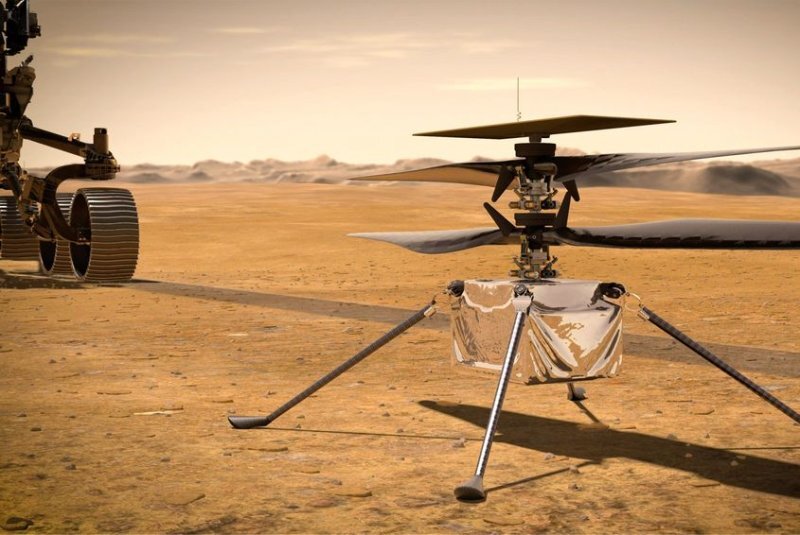
Ingenuity, the tiny $80 million helicopter that has hovered over Mars 55 times since April 2021, will continue mapping the planet's surface as long as it can still fly, the former team lead at NASA's Jet Propulsion Laboratory in Pasadena, Calif., told UPI.
Ted Tzanetos, whose team turned 4-pound Ingenuity into the little helicopter that could, now manages creation of a recovery helicopter to gather geological samples of Martian air, soil and rocks that the Perseverance rover has been collecting since landing with Ingenuity aboard on the Red Planet in February 2021.
"We've taken our old Ingenuity engineering model and we've pushed it to its limits," Tzanetos said in a phone interview. "We're in the process now of building our first full-scale prototype for chamber testing in September."
That will be one of many trials to ensure lightweight helicopters can assist retrieving Martian samples to be loaded into a rocket-propelled container ready to carry them to Earth.
NASA intends to launch a spacecraft called the Sample Retrieval Lander in 2028, which will settle on Mars as close as possible to the Jezero Crater and river delta, where Perseverance touched down.
The space agency's original plans involved using Perseverance in a primary role, transferring the geological payload directly to the retrieval lander. But that would mean a lot of maneuvering for the rover and its robotic arm, said Joshua Anderson, Ingenuity's team lead at JPL.
And a mobility problem affecting either system could spell disaster for the $2 billion mission.
Mars watchers may have noticed Ingenuity's seeming disappearance in April, after the helicopter surpassed expectations about its robustness, resiliency and reliability. Its successes gradually convinced managers they already had the prototype needed for the sample recovery helicopters.
After the mini chopper went silent April 26, controllers feared the worst -- that Ingenuity was disabled or destroyed or that the harsh Mars temperatures killed its batteries. While they were thoroughly pleased with its exceptional performance, it was hard for them to let go.
But then, on June 28, Ingenuity phoned home via the Perseverance rover -- the first word from the chopper since it went silent on the floor of the Jezero Crater after its 52nd flight.
But more drama lay ahead. The 53rd flight, on July 22, at 74 seconds, was far shorter than the planned 136 seconds to collect surface imagery of a rocky outcrop.
"Since the very first flight, we have included a program called 'LAND_NOW' that was designed to put the helicopter on the surface as soon as possible if any one of a few dozen off-nominal scenarios was encountered," Tzanetos said.
"During Flight 53, we encountered one of these, and the helicopter worked as planned and executed an immediate landing."
Flight 54 on Aug. 3, a 25-second up-and-down hop, was intended to determine what happened on the previous truncated flight and gave controllers confidence that Integrity had more life left in it.
"The Aug. 3 flight has proved that our baby is healthy and ready to keep flying," Tzanetos said. "That's important for the sample recovery helicopters because it is a safety net feature that now we know works. We know that the code execution task works well."
Then, Ingenuity flew for the 55th time Aug. 12, covering a wide bit of ground in its surveying mission.
"Ingenuity has now successfully flown on Mars 55 times! On its latest flight, the #MarsHelicopter flew 866 feet (264 m) for 143 seconds at a height of 32.8 feet (10 m)," JPL wrote via X, formerly Twitter, on Aug. 16.
The little helicopter has now covered 41,024 feet of ground and stayed aloft for nearly 98 minutes on its 55 flights, mission team members wrote on the chopper's flight log. And a repositioning 56th flight is imminent.
With their problem solved, engineers continue their work to show how helicopters could play a critical role in the sample recovery operations, Anderson said.
"Demonstrating coordination between Perseverance and Ingenuity remains a main goal," he said. That's how the Mars copters will play a primary role, rather than assist as backups.
New ones will be slightly larger and carry more sophisticated instruments than Ingenuity's, working in coordination with Perseverance to identify and verify the location of containers that the rover has been storing around the landing site.
The aircraft will pick up a single sample container at a time, deliver it to the Sample Retrieval Lander, fly back to get the next one, deliver it, and so on -- a task for both of Ingenuity's twin successors.
Most people, "even at JPL, wondered about flying a helicopter in an atmosphere with a pressure that's barely 0.7% of Earth," Anderson said. "There was a huge question of whether you could actually do something useful with a helicopter on Mars."
As it turned out, propeller blades spinning between 2,400 and 2,900 rpm did the trick. They are not just run-of-the-mill blades; they are made of carbon fiber specifically designed for the Martian environment.
Given Earth's greater atmospheric density, helicopter blades run between 225 and 550 rotations per minute, depending on aircraft shape and size.
If Ingenuity's propeller blades were to rotate in Earth's atmosphere, they would shatter within seconds. At a spin rate six times higher than that of standard helicopters, the edges would reach supersonic speeds, and the vibrations would be strong enough to cause obliteration.
NASA chose to explore the Jezero Crater's vicinity because billions of years ago, water was likely abundant and temperatures favorable to the presence of microscopic living organisms. And traces of microbial life can conserve for billions of years, especially in a fossilized state.
That would make for a historic finding.
It almost happened in 1997, when a Martian meteorite found in Antarctica showed possible evidence of past life. Even the White House became involved, with former President Bill Clinton announcing the discovery.
Microscope scans showed virus-size markers that could have resulted either from inorganic or organic chemical reactions. In the end, however, scientists acknowledged their investigations and results were inconclusive.
For the sample recovery mission, "We would arrive on Mars in 2030, and then it's a two-year cruise," Tzanetos said.
"So, launch in '28, arrive in 2029 or '30. Then, hopefully, the tubes would come back to Earth within two years of that, in 2032 or '33."
But it won't necessarily be easy, and the mission will require help from the European Space Agency.
"ESA is working with NASA to explore mission concepts for an international Mars Sample Return campaign," the agency said. "Several launches will be necessary to accomplish landing, collecting, storing and finding samples and delivering them to Earth."
It added: "Returning samples to Earth from Mars is expected to be the most complex robotic space flight campaign ever attempted."
Quelle: UPI
----
Update: 2.09.2023
.
Mars helicopter Ingenuity completes 56th flight
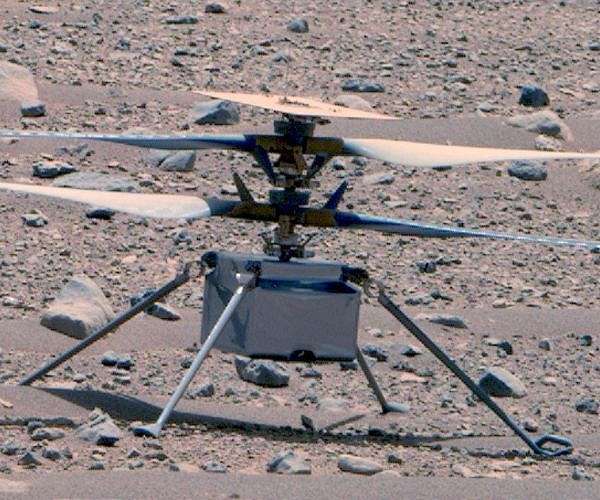
Ingenuity, the tiny helicopter that has far surpassed expectations on Mars, has completed its 56th flight, NASA's Jet Propulsion Lab announced Thursday.
Ingenuity flew 1,334 feet, a little over a quarter of a mile, across the Martian surface last Saturday, JPL said in a statement. The tiny chopper flew at a maximum altitude of about 39 feet above the surface of the Red Planet.
"The goal of this flight was to reposition the helicopter," the statement reads.
The $80 million helicopter first flew at what has been called the Wright Brothers Airfield on the Martian surface in April 2021.
The helicopter was meant to demonstrate powered, controlled flight on another world for the first time, according to NASA. The test was meant to take place over a 30-Martian-day experimental window.
The technology demonstration was completed after three successful flights and Ingenuity transitioned to a new operations demonstration phase "to explore how future rovers and aerial explorers can work together."
NASA officials told UPI on Wednesday that the helicopter will continue mapping the planet's surface as long as it can still fly.
In total, the helicopter has now flown more than 42,369 feet across the surface of the planet, or a little over eight miles. The highest altitude it has reached is a little less than 60 feet above the surface of Mars.
However, Ingenuity went silent on April 26, leading its controllers to fear that it was destroyed by the harsh temperatures on the fourth planet from the sun.
But then, on June 28, Ingenuity phoned home via the Perseverance rover -- the first word from the chopper since it went silent on the floor of the Jezero Crater after its 52nd flight.
"Demonstrating coordination between Perseverance and Ingenuity remains a main goal," Joshua Anderson, Ingenuity's team lead at JPL, told UPI.
NASA is now working on creating more lightweight helicopters to assist retrieving Martian samples to be loaded into a rocket-propelled container ready to carry them to Earth.
Quelle: SD
----
Update: 8.09.2023
.
NASA’s Oxygen-Generating Experiment MOXIE Completes Mars Mission
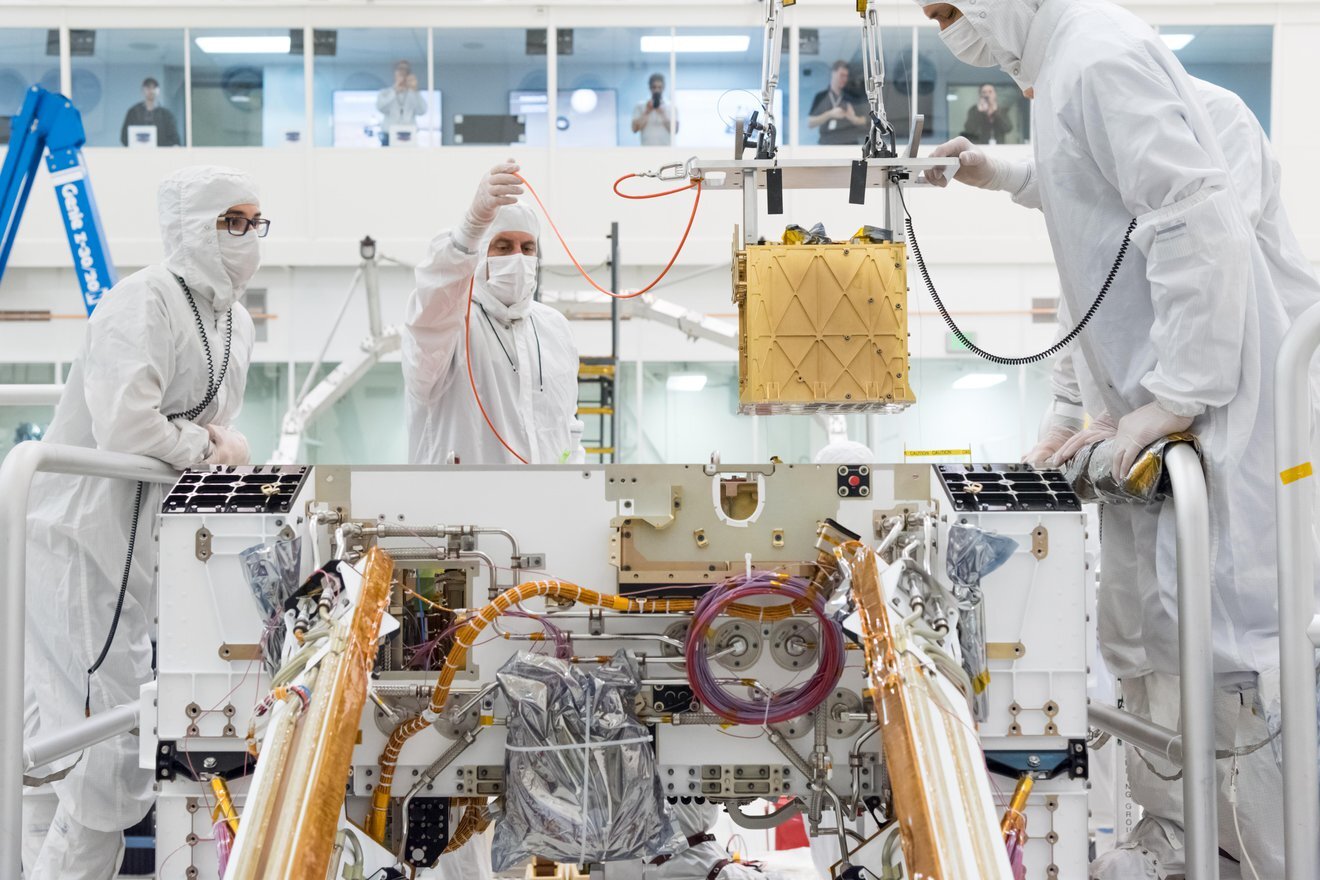
MOXIE (Mars Oxygen In-situ Resource Utilization Experiment) is lowered into the chassis of NASA’s Perseverance in 2019. During the mission, MOXIE extracted oxygen from the Martian atmosphere 16 times, testing a way that future astronauts could make rocket propellant that would launch them back to Earth.
Credit: NASA/JPL-Caltech
Riding with the Perseverance rover, the instrument has proved to be a viable technology for astronauts on Mars to produce oxygen for fuel and breathing.
When the first astronauts land on Mars, they may have the descendants of a microwave-oven-size device to thank for the air they breathe and the rocket propellant that gets them home. That device, called MOXIE (Mars Oxygen In-Situ Resource Utilization Experiment), has generated oxygen for the 16th and final time aboard NASA’s Perseverance rover. After the instrument proved far more successful than its creators at the Massachusetts Institute of Technology (MIT) expected, its operations are concluding.
“MOXIE’s impressive performance shows that it is feasible to extract oxygen from Mars’ atmosphere – oxygen that could help supply breathable air or rocket propellant to future astronauts,” said NASA Deputy Administrator Pam Melroy. “Developing technologies that let us use resources on the Moon and Mars is critical to build a long-term lunar presence, create a robust lunar economy, and allow us to support an initial human exploration campaign to Mars.”
Since Perseverance landed on Mars in 2021, MOXIE has generated a total of 122 grams of oxygen – about what a small dog breathes in 10 hours. At its most efficient, MOXIE was able to produce 12 grams of oxygen an hour – twice as much as NASA’s original goals for the instrument – at 98% purity or better. On its 16th run, on Aug. 7, the instrument made 9.8 grams of oxygen. MOXIE successfully completed all of its technical requirements and was operated at a variety of conditions throughout a full Mars year, allowing the instrument’s developers to learn a great deal about the technology.
“We’re proud to have supported a breakthrough technology like MOXIE that could turn local resources into useful products for future exploration missions,” said Trudy Kortes, director of technology demonstrations, Space Technology Mission Directorate (STMD) at NASA Headquarters in Washington, which funds the MOXIE demonstration. “By proving this technology in real-world conditions, we’ve come one step closer to a future in which astronauts ‘live off the land’ on the Red Planet.”
MOXIE produces molecular oxygen through an electrochemical process that separates one oxygen atom from each molecule of carbon dioxide pumped in from Mars’ thin atmosphere. As these gases flow through the system, they’re analyzed to check the purity and quantity of the oxygen produced.
First of Its Kind
While many of Perseverance’s experiments are addressing the mission’s primary science goals, MOXIE was focused on future human exploration. MOXIE served as the first-ever demonstration of technology that humans could use to survive on, and leave, the Red Planet. An oxygen-producing system could help future missions in various ways, but the most important of them would be as a source of rocket propellant, which would be required in industrial quantities to launch rockets with astronauts for their return trip home.
Rather than bringing large quantities of oxygen with them to Mars, future astronauts could live off the land, using materials they find on the planet’s surface to survive. This concept – called in-situ resource utilization, or ISRU – has evolved into a growing area of research.
“MOXIE has clearly served as inspiration to the ISRU community,” said the instrument’s principal investigator, Michael Hecht of MIT. “It showed NASA is willing to invest in these kinds of future technologies. And it has been a flagship that has influenced the exciting industry of space resources.”
Future Focus
The next step wouldn’t be building MOXIE 2.0 – although Hecht and his team have learned a lot about how to design a more efficient version of the instrument. Rather, it would be to create a full-scale system that includes an oxygen generator like MOXIE and a way to liquefy and store that oxygen.
But more than anything, Hecht would like to see other technologies get their turn on Mars. “We have to make decisions about which things need to be validated on Mars,” Hecht said. “I think there are many technologies on that list; I’m very pleased MOXIE was first.”
More About the Mission
A key objective for Perseverance’s mission on Mars is astrobiology, including the search for signs of ancient microbial life. The rover will characterize the planet’s geology and past climate, pave the way for human exploration of the Red Planet, and be the first mission to collect and cache Martian rock and regolith (broken rock and dust).
Subsequent NASA missions, in cooperation with ESA (European Space Agency), would send spacecraft to Mars to collect these sealed samples from the surface and return them to Earth for in-depth analysis.
The Mars 2020 Perseverance mission is part of NASA’s Moon to Mars exploration approach, which includes Artemis missions to the Moon that will help prepare for human exploration of the Red Planet.
NASA’s Jet Propulsion Laboratory, which is managed for the agency by Caltech in Pasadena, California, built and manages operations of the Perseverance rover.
JPL manages the MOXIE project for the Technology Demonstration Missions program within STMD. MOXIE was also supported by NASA’s Exploration Systems Development Mission Directorate and the Science Mission Directorate.
Quelle: NASA
----
Update: 10.09.2023
.
How helicopters on Mars could find hidden magnetism in planet's crust
A simple add-on to Ingenuity-like crafts could gather unique data, scientists say.
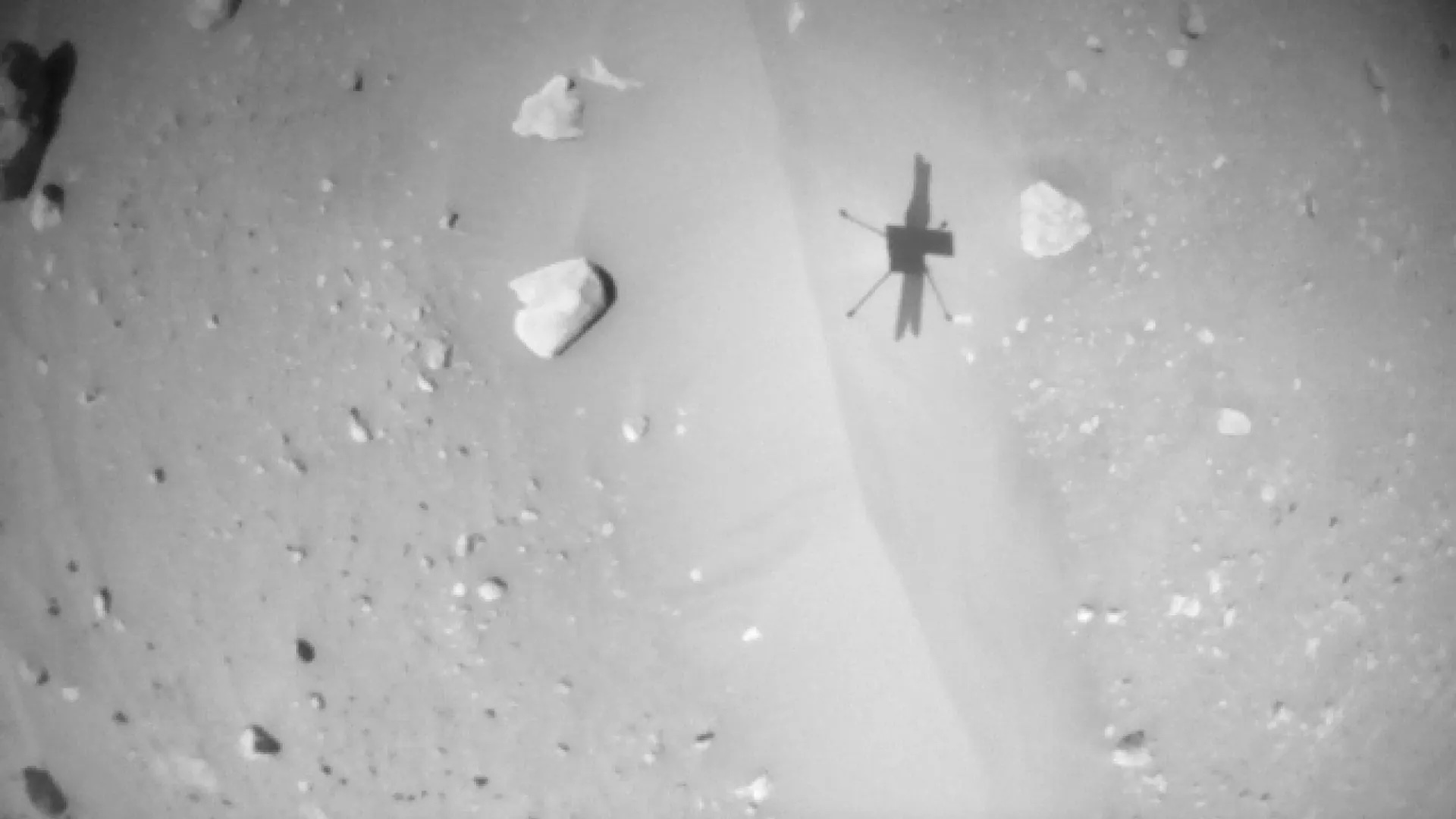
NASA's Mars helicopter Ingenuity captured this image of its shadow during its 57th Red Planet flight, on Sept. 3, 2023. (Image credit: NASA/JPL-Caltech)
Last weekend, NASA's Ingenuity helicopter notched over 100 minutes of flying time in thin Martian air, a feat which until only a couple of years ago was considered wildly ambitious.
Originally designed for a simple technology demonstration, the "Marscopter" has far exceeded its initial one-month, five-flight mission, after which its role was extended to scout the Martian landscape and assist NASA's Perseverance life-seeking rover. Riding on Ingenuity's success, scientists are already planning two more mini helicopters. These will serve as backup copters in the space agency's mission to bring tubes of Martian samples to Earth. Teams are also building another craft to visit Saturn's moon Titan.
To make the most of those future space helicopters, a new study proposes an add-on instrument: A magnetometer that could gather unique data about magnetic fields etched onto the crusts of any resident in the solar system being explored.
"The era of helicopter-based surveys on Mars has already begun," researchers write in the new study. "We argue that magnetometer-based studies can make use of aerial technology to answer some of the key questions regarding early Mars evolution."
Helicopters flying on Mars would be most useful by filling in gaps in hyperlocal data observations collected with lander-rover duos on the surface as well as in global data gathered by orbiters circling the planet from hundreds of kilometers away, scientists say.
Unlike Earth, Mars does not generate its own magnetic field, and its dynamo — a rotating blob of molten material in the planet's core that once powered a sizable magnetic field — is thought to have shut down about three or four billion years ago, leaving countless pockets of magnetized crust in its wake. However, the depth and strength of these scattered patches on Mars, which can shed light onto the planet's evolution, are not mapped comprehensively.
So, powered flights at low-altitudes on Mars, perhaps only tens of kilometers high, could detect some of those "unexplored signals" with aerial measurements of canyons, steep slopes, craters and dunes otherwise considered too dangerous for rovers but too tiny for spacecraft orbiting the planet to capture, according to the new study.
"A helicopter is the ideal platform to overcome such limitations," scientists say. Studying these small-scale magnetic fields "can provide information that simply cannot be gleaned from orbit."
There is precedent on Earth that such an effort could be useful. Aircraft survey data had previously revealed a pattern of magnetic anomalies alongside tectonic plate boundaries, which ultimately became key evidence for the planet's now well-established magnetic field reversals. The same pattern was not found in data from satellites orbiting Earth, according to the new study.
This research is described in a paper published Aug. 29 in The Planetary Science Journal.
Quelle: SC
----
Update: 21.09.2023
.
NASA's Ingenuity helicopter breaks altitude record on 59th Mars flight
The little chopper rose 66 feet (20 meters) above the red dirt during its Sept. 16 sortie.
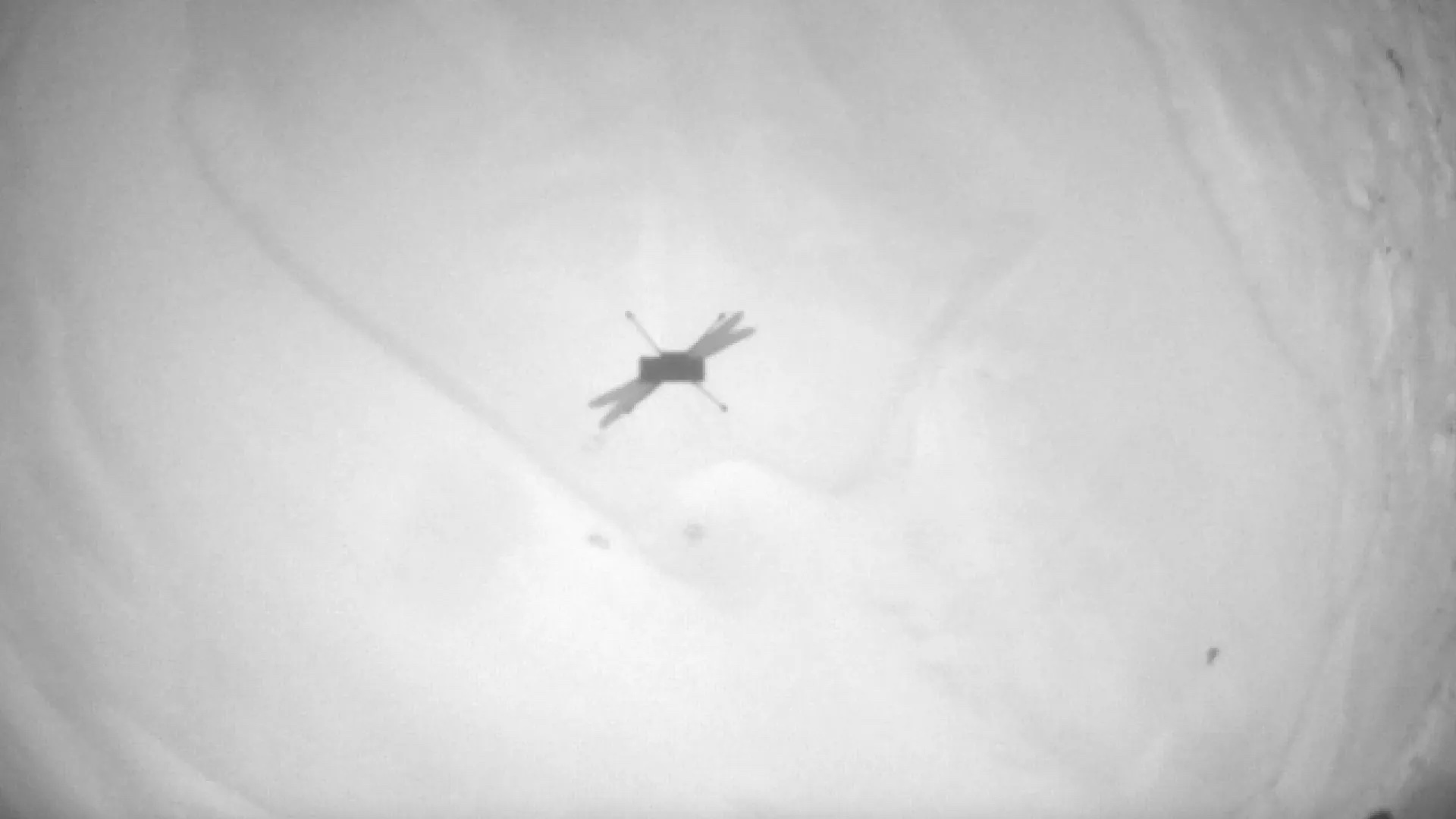
NASA’s Ingenuity Mars helicopter snapped this photo of its own shadow on Sept. 16, 2023, during its 59th Red Planet flight. (Image credit: NASA/JPL-Caltech)
NASA's Ingenuity helicopter keeps pushing the boundaries of off-Earth flight.
The 4-pound (1.8 kilograms) Ingenuity aced its 59th Mars sortie on Saturday (Sept. 16), soaring higher than ever before in the process.
"Ingenuity has set a new record! The #MarsHelicopter successfully completed Flight 59, flying its highest altitude yet — 20 meters [66 feet]. The rotorcraft was in the air for 142.59 seconds," officials with NASA's Jet Propulsion Laboratory in Southern California, which manages the helicopter's mission, posted on X(formerly Twitter) on Tuesday (Sept. 19).
Flight 59 was a full hover; Ingenuity covered no horizontal distance during the hop, according to the mission's flight log.
Ingenuity landed with NASA's Perseverance rover in February 2021 on the floor of the 28-mile-wide (45 kilometers) Jezero Crater, which harbored a big lake and a river delta long ago.
Perseverance is searching for signs of ancient Mars life inside Jezero and collecting samples that'll be returned to Earth in the future. Ingenuity is serving as a scout for the rover team, helping find good routes for Perseverance's travels and identifying promising science targets to investigate.
The rotorcraft is doing this work on an extended mission. Its primary mission aimed to show that aerial exploration is possible on Mars despite the planet's thin atmosphere. Ingenuity completed that proof-of-concept assignment over the course of five flights a few months after touching down on the Red Planet, and then it just kept on flying.
Over the course of its 59 flights, Ingenuity has traveled a total of 43,652 feet (13,304 m) and stayed aloft for 106.5 minutes, according to the flight log.
Before Flight 59, the helicopter's altitude mark stood at 59 feet (18 m). Its single-flight distance and duration records are 2,310 feet (704 m) and 169.5 seconds, set in April 2022 and August 2021, respectively.
Quelle: SC
